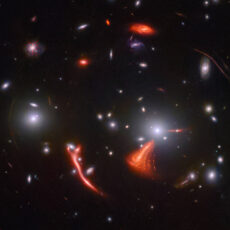
NASA / ESA’s Hubble Space Telescope observes spiral galaxy IC 1776 located over 150 million light-years from Earth in the constellation Pisces. What sets this spiral galaxy apart from others are its irregular-shape and spiral arms that seemingly blend together. Its edges are faint and the core has a pale yellow glow, dotted with small, wispy, blue regions where stars are forming.

You can’t tell from this image, but IC 1776 recently hosted a catastrophically violent supernova explosion. This was discovered by the Lick Observatory Supernova Search in 2015, a robotic telescope which scans the night sky in search of transient phenomena such as supernovae. This network of automatic robotic telescopes are found across the globe, operated by both professional and amateur astronomers.
- BRIGHT, SHARP VIEWS ANYWHERE: Unlike many beginner telescopes, this quality refractor features fully coated glass lenses and a 70mm aperture for...
- PERFECT FIRST TELESCOPE FOR BEGINNERS: Designed for adults and kids to enjoy together, this beginner-friendly telescope sets up in minutes and...
- EASY NO-TOOL SETUP: No complicated assembly or tools needed. The full-height tripod and telescope tube set up in seconds and pack neatly into the...
Hubble investigated the aftermath of the supernova SN 2015ap during two different observing programmes, both designed to comb through the debris left by supernovae explosions in order to better understand these energetic events. A variety of telescopes automatically follow up the detection of supernovae to obtain early measurements of these events’ brightnesses and spectra,” said the ESA.








